Excerpts from Jim Conrad's
Naturalist Newsletter
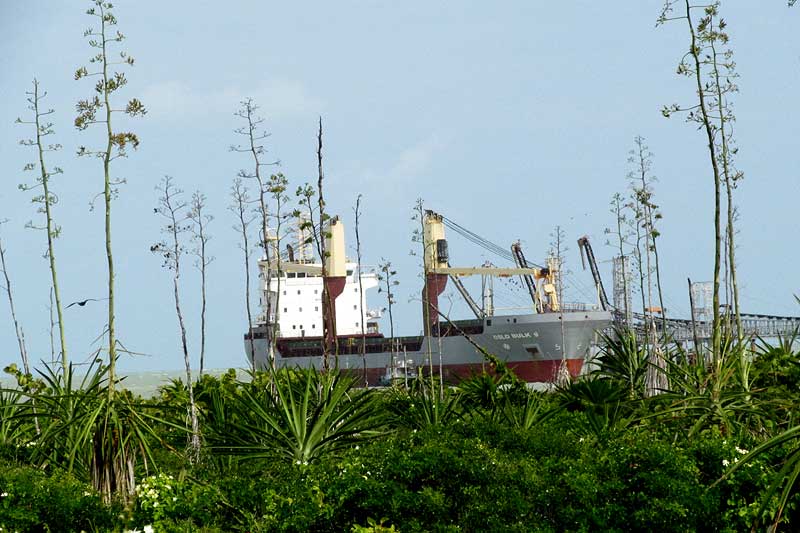
from the November 30, 2014 Newsletter issued from Río Lagartos, on the Yucatan Peninsula's northern coast (~N21.60°, ~W88.16°), Yucatán state, MÉXICO
CARIBBEAN AGAVE FLOWERING
Here in the scrub vegetation on dunes along the coast and in thin soil atop limestone the agaves are abundant, and many are flowering. Above, you can see how thickly they grow in a picture taken across coastal strand vegetation toward a ship loading salt at Las Coloradas about 20kms east of Río Lagartos. Attention must be paid when you walk through that vegetation because the agave blades are tipped with hard, sharp spines, shown below:
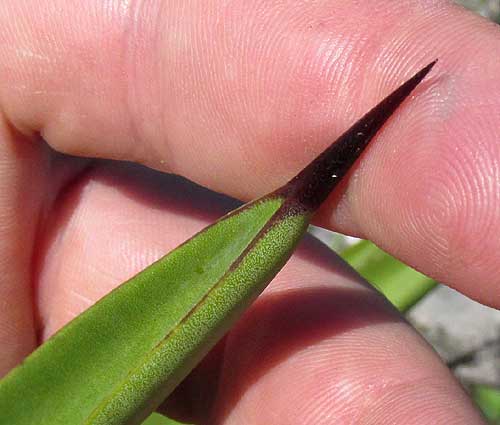
Even the blades' margins can rip your skin or clothing, as is clear below:
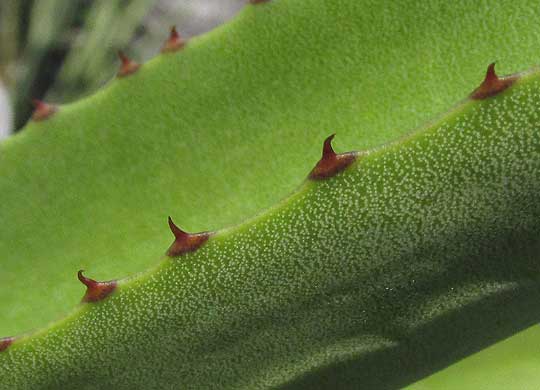
The big panicles of flowers atop their well defended bases are more welcoming to air-borne pollinators, but to attain the nectar down inside the flowers the bats who pollinate them have to penetrate a cloud of long, stiff stamens and styles, as shown below:
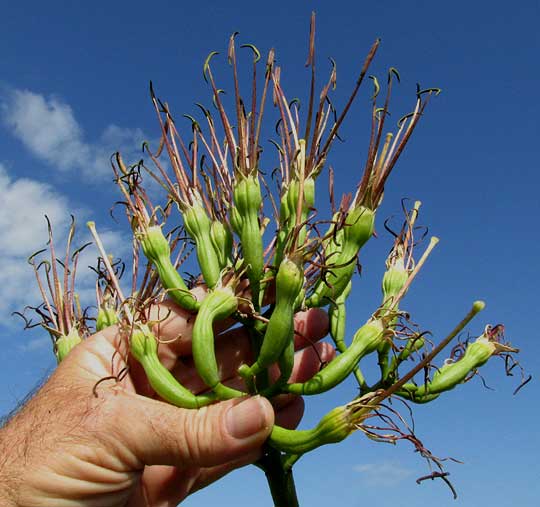
It's generally said that agaves with panicle-type flower clusters growing in tropical arid zones depend on nectar-feeding bats for pollination, while species in the temperate zone are pollinated by diurnal and nocturnal insects and birds, so our bat-pollinated species agrees with that notion. Each flower produces six stamens composed of slender, stiff filaments topped with curving anthers attached at their backs. Amidst each stamen cluster there's a short, thick style tipped with a roundish stigma, where bats are supposed to deposit pollen from other flowers. These details can be seen below:
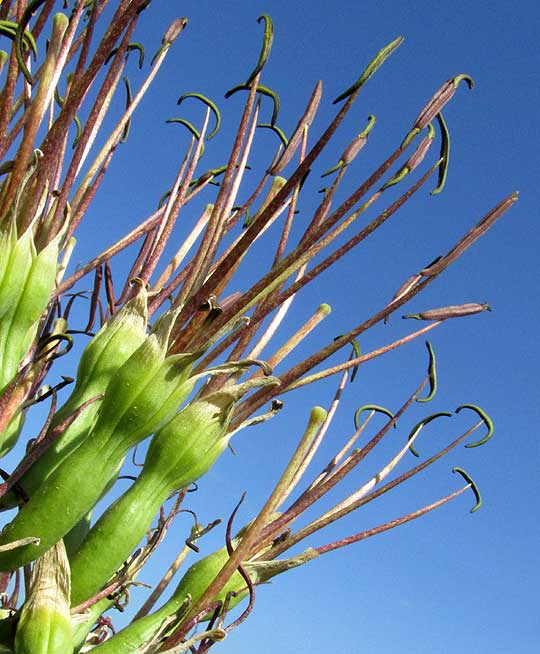
This is AGAVE ANGUSTIFOLIA, often known as the Caribbean Agave, distributed from Costa Rica north to arid regions of northeastern Mexico, including all of the Yucatan. In Mexico the species is famous as the usual source of commercial mescal, mescal being Mexico's main traditional booze. Sometimes other agave species are used for mescal as well. Mescal is different from Tequila. Tequila is distilled mainly from the juice of a different species, Agave tequilana, and is generally regarded as more upscale than mescal.
Our Caribbean Agave has been cultivated for so long that several important cultivars have been developed, including some that are important sources of fiber -- though most commercial agave fiber comes from yet another species, Agave sisalana. Numerous ornamental cultivars of the Caribbean Agave are planted throughout the world, including 'Marginata' with white blade margins and a particularly pale form often called Agave angustifolia Woodrowii.
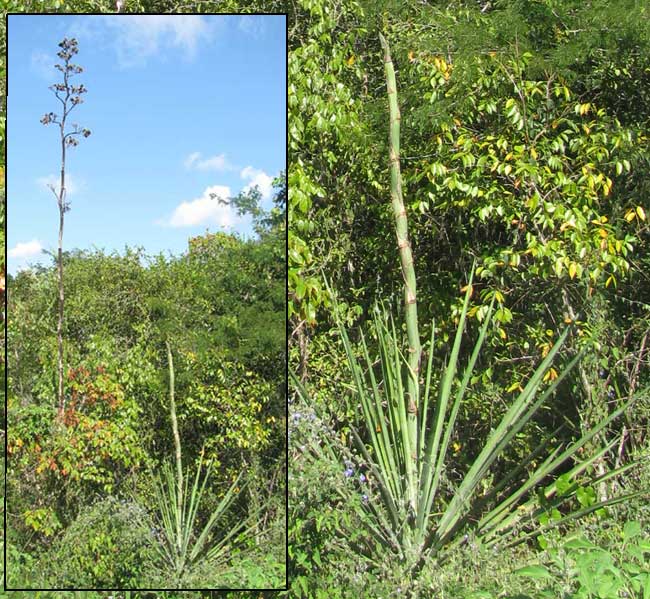
from the October 24, 2010 Newsletter issued from Hacienda Chichen Resort beside Chichén Itzá Ruins, central Yucatán, MÉXICO; limestone bedrock, elevation ~39m (~128ft), ~N20.676°, ~W88.569°
WILD AGAVE ABOUT TO FLOWER
Above you see a wild agave on the right sending up a giant-asparagus-like flower stalk on which flower buds haven't yet developed. The inset at the left shows the same plant from a distance, with an old, dead flower stalk to its left. You can see that the flower stalk rises well above the scrubby forest around it. The stalk stands maybe 15 feet tall (nearly 5m). The picture was taken along the quiet little road about 10 km south of Pisté.
So, which agave is this?
Figuring out Mexico's agave species can be hard. One reason is that prehistoric man carried agave food and fiber, and live agave plants, all over the place. They may have carried exotic species and cultivars into our area from far away, and the descendents of those plants might be hanging on as forest-living relicts to this day. The matter is discussed a bit down the online Flora of North America page for Agave
I'm not sure I could distinguish what's in the picture from Sisal or Henequen Agave, Agave sisalana, which is much planted farther west from here, around Mérida. Henequen fiber used to be a very important crop there, where it's a bit more arid than here, making it better for henequen production. However, I know the agave in the picture isn't a Sisal Agave because of what's shown below:
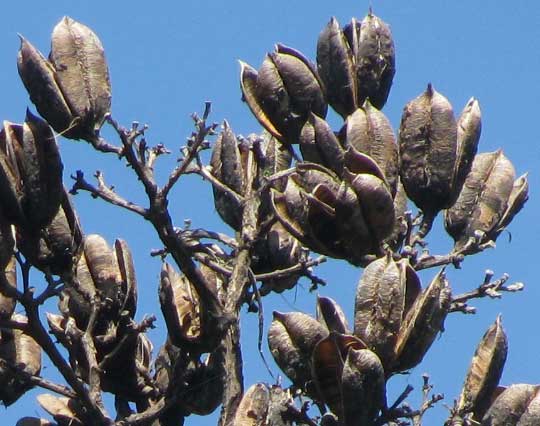
Those are old, split-open fruit capsules of the dead agave at the left of the inset in the previous picture. The capsules are well formed and look as if they've dropped a good crop of seeds. According to the Flora of North America page for the cultivated Sisal Agave, "The plant is not known from the wild... capsules and seeds of this species are unknown." So, what's in the picture isn't the Sisal Agave.
I'm supposing that the best name for the illustrated agave is AGAVE ANGUSTIFOLIA, because that species is known to live here, and our plants match pictures of that species on the Internet. However -- especially here at Chichén Itzá where once major Maya trade routes connected -- it's just no telling what curious agaves may be hanging on in local woods, relict descendents from who-knows-where?
from the April 17, 2011Newsletter issued from Hacienda Chichen Resort beside Chichén Itzá Ruins, central Yucatán, MÉXICO; limestone bedrock, elevation ~39m (~128ft), ~N20.676°, ~W88.569°
AGAVE PLANTLETS
An agave with most of its fruit capsules already empty of seeds and dropped off, is shown below:
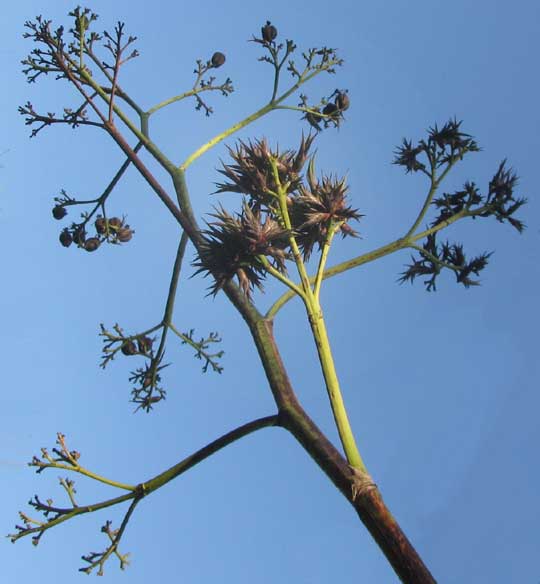
What's interesting about that fruiting head is that the lower panicle branches bear, instead of seed-bearing capsules, dense clusters of sterile, miniature versions of the agave itself, which can fall off, root, and grow into a clone of the mother plant. A close-up of one of the clusters is shown below:
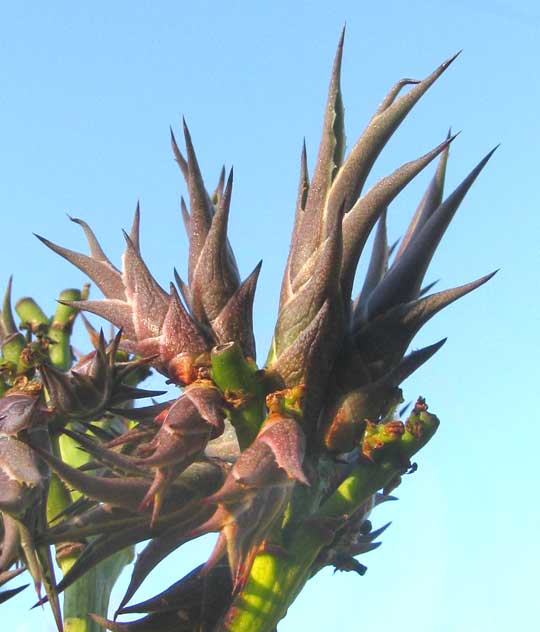
A close-up of some empty capsules mixed with several small, vegetative plantlets is below:
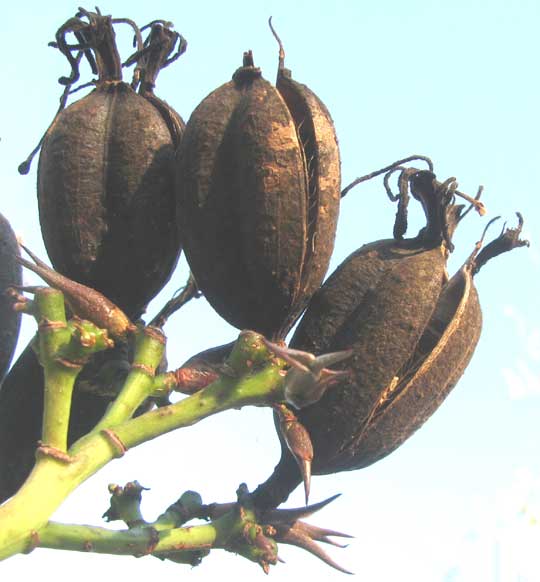
To help with identification, I also photographed part of a younger, living plant seeming to have budded off the dead one, shown below:
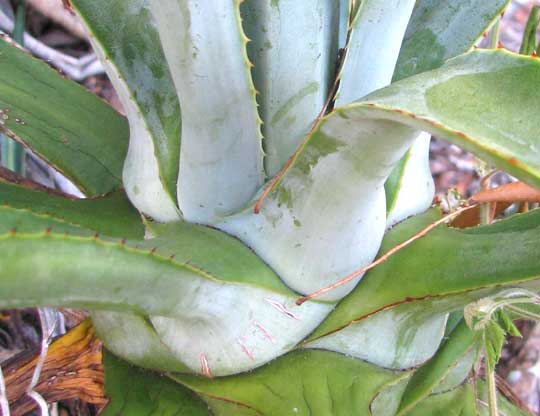
In the picture you can see how the thick blades with their weakly spiny margins bulge at their bases where they connect with the main body, and are covered with a silvery bloom -- a heavy glaucescence. The blades end in a very dark, stiff, sharp spine. The sharp but spindly marginal spines sometimes curve backward, sometimes forward.